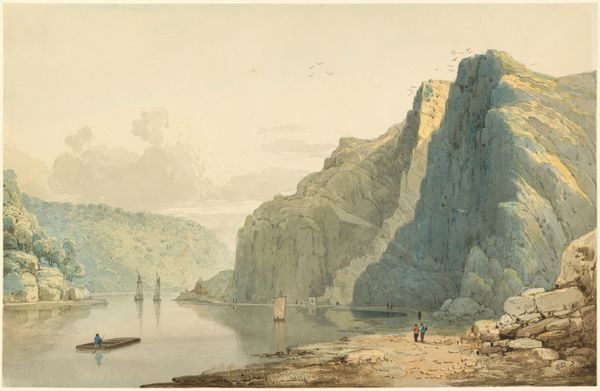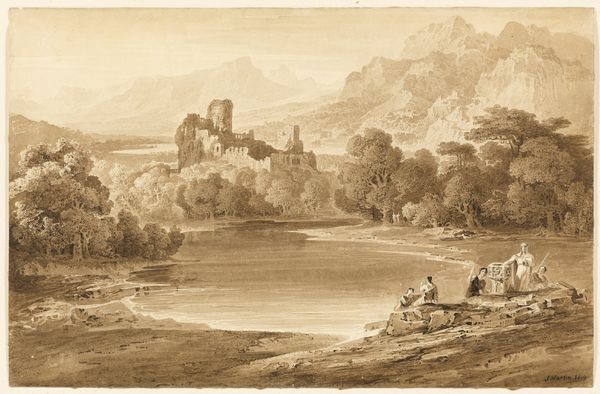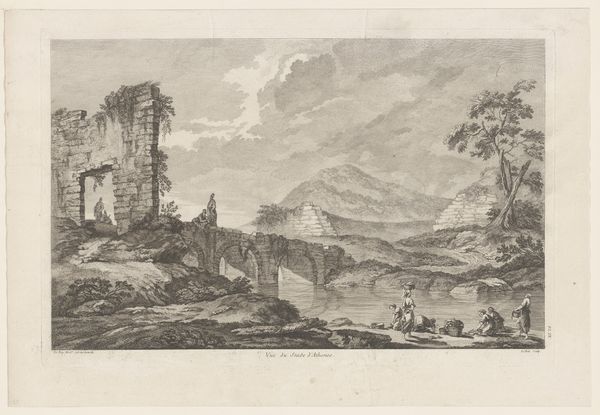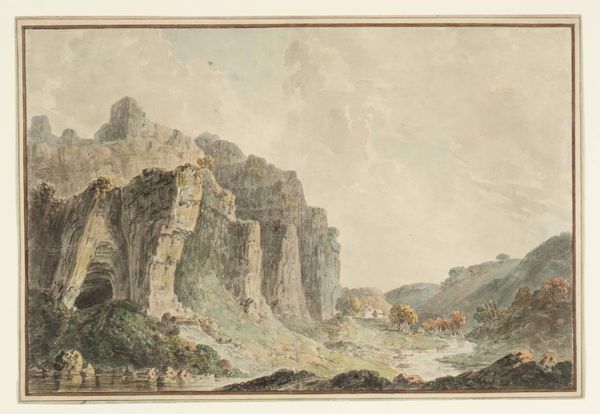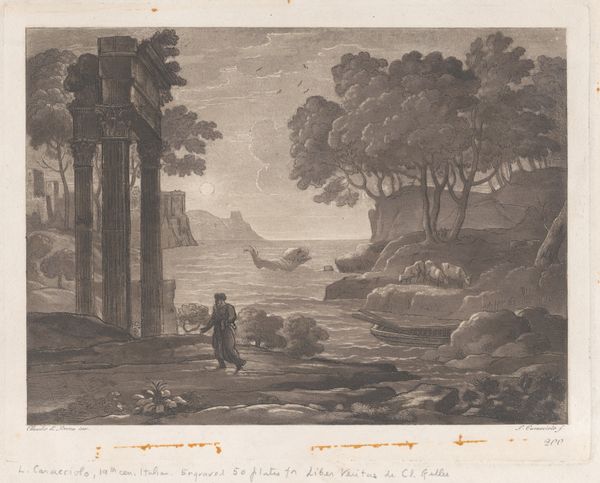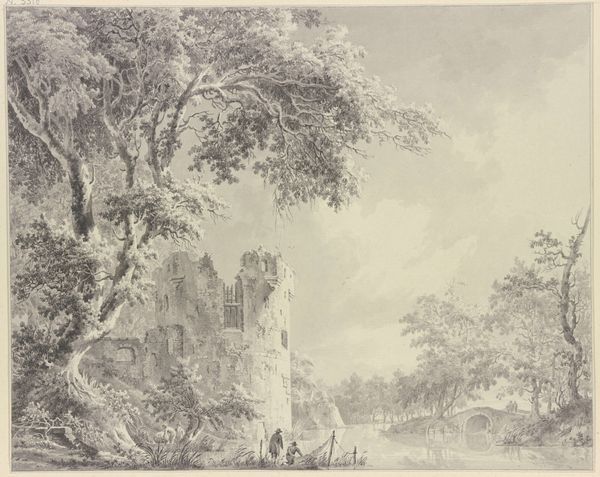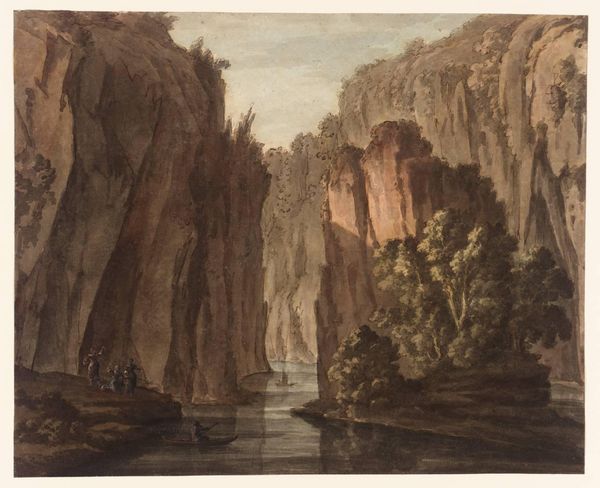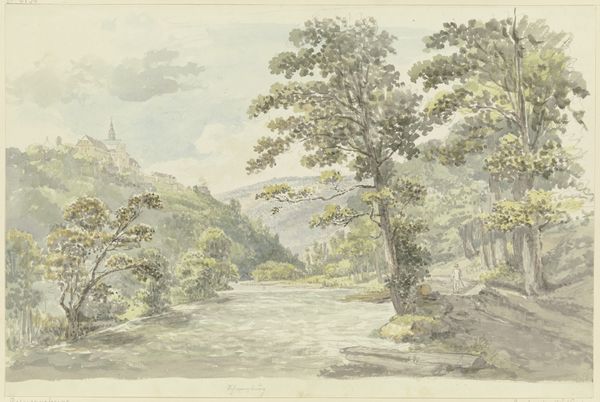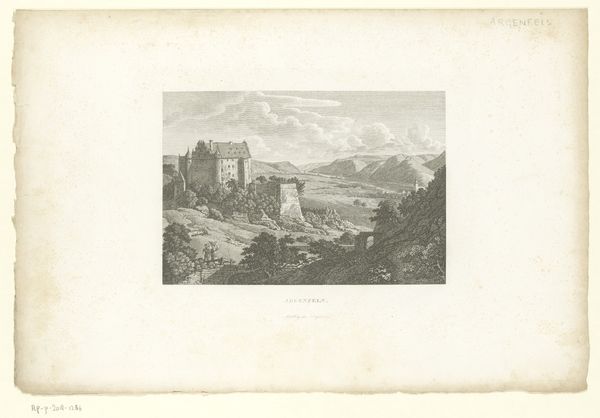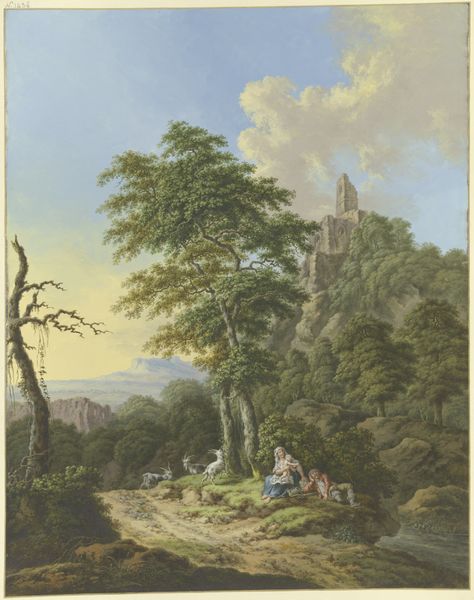
drawing, watercolor
#
drawing
#
landscape
#
watercolor
#
romanticism
#
watercolour illustration
#
history-painting
#
watercolor
Dimensions: sheet: 21.1 × 29.2 cm (8 5/16 × 11 1/2 in.)
Copyright: National Gallery of Art: CC0 1.0
Editor: This is William Payne’s "A Ruined Abbey by a Waterfall," dating back to around 1800, crafted with watercolor and drawing. The scene is incredibly evocative. It almost feels like a stage set, a melancholic backdrop for some long-lost drama. What's your interpretation? Curator: Oh, you’re absolutely right about the stage-set quality. For me, it’s that contrast of the man-made—the Abbey, crumbling, yearning—with the raw, unstoppable force of nature. It whispers of time's passage, the ephemeral nature of our grandest designs. I find it profoundly moving. And notice the color palette, how it almost fades into the sky…like a memory. What draws *you* to it, specifically? Editor: The scale! It is diminutive, but hints to big themes of Romanticism... I am interested in the history and context in more detail... Curator: Ah, yes, scale and history! That delicate touch, those watercolor washes—Payne developed a unique way of layering colour that lent itself well to mass production via prints, which speaks volumes about how landscape was consumed at the time. And the Abbey... Do you think it is just an "ABBEY"? Editor: Not really, what do you have in mind? Curator: I see the abbey as a ruin *of the mind.* Romanticism reveled in the broken, the incomplete. Not necessarily gothic novels, but thinking of a new kind of man, less strict and rigorous. Editor: That’s fascinating. It completely reframes how I see those figures standing before it too, almost like pilgrims at the precipice of a new era. Curator: Precisely. Art like this teaches me humility and encourages to accept things change, the end. Editor: Well, now I can see this work as much more than a pretty landscape. It's a reminder to think about history and its lasting impacts on all we are.
Comments
No comments
Be the first to comment and join the conversation on the ultimate creative platform.
